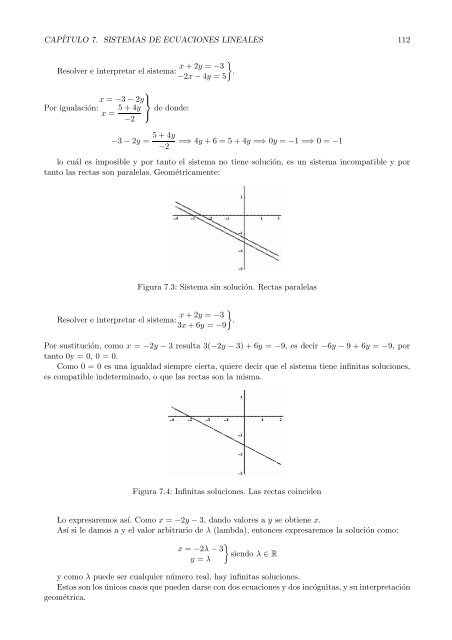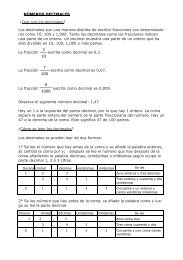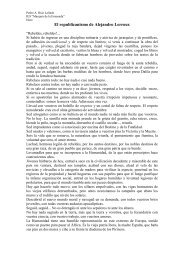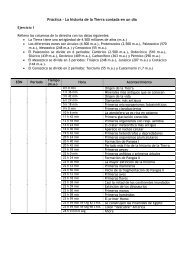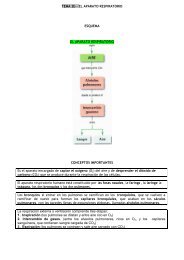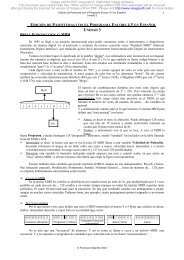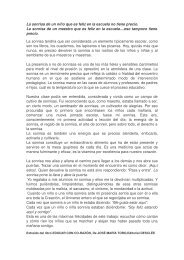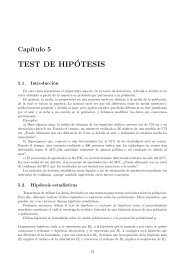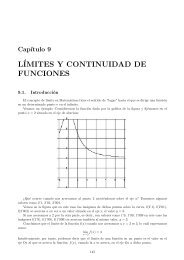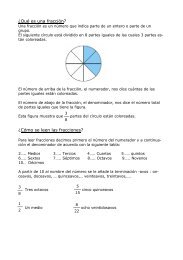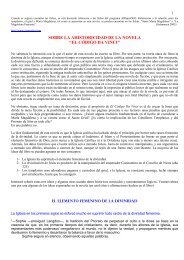SISTEMAS DE ECUACIONES LINEALES
SISTEMAS DE ECUACIONES LINEALES
SISTEMAS DE ECUACIONES LINEALES
Create successful ePaper yourself
Turn your PDF publications into a flip-book with our unique Google optimized e-Paper software.
CAPÍTULO 7. <strong>SISTEMAS</strong> <strong>DE</strong> <strong>ECUACIONES</strong> <strong>LINEALES</strong> 112<br />
<br />
x +2y = −3<br />
Resolver e interpretar el sistema: .<br />
−2x − 4y =5<br />
x = −3 − 2y<br />
Por igualación:<br />
x = 5+4y<br />
⎫<br />
⎬<br />
de donde:<br />
⎭<br />
−2<br />
−3 − 2y = 5+4y<br />
=⇒ 4y +6=5+4y =⇒ 0y = −1 =⇒ 0=−1<br />
−2<br />
lo cuál es imposible y por tanto el sistema no tiene solución, es un sistema incompatible y por<br />
tanto las rectas son paralelas. Geométricamente:<br />
Figura 7.3: Sistema sin solución. Rectas paralelas<br />
<br />
x +2y = −3<br />
Resolver e interpretar el sistema: .<br />
3x +6y = −9<br />
Por sustitución, como x = −2y − 3resulta3(−2y − 3) + 6y = −9, es decir −6y − 9+6y = −9, por<br />
tanto 0y = 0, 0 = 0.<br />
Como 0 = 0 es una igualdad siempre cierta, quiere decir que el sistema tiene infinitas soluciones,<br />
es compatible indeterminado, o que las rectas son la misma.<br />
Figura 7.4: Infinitas soluciones. Las rectas coinciden<br />
Lo expresaremos así. Como x = −2y − 3, dando valores a y se obtiene x.<br />
Así si le damos a y el valor arbitrario de λ (lambda), entonces expresaremos la solución como:<br />
<br />
x = −2λ − 3<br />
siendo λ ∈ R<br />
y = λ<br />
ycomoλ puede ser cualquier número real, hay infinitas soluciones.<br />
Estos son los únicos casos que pueden darse con dos ecuaciones y dos incógnitas, y su interpretación<br />
geométrica.


